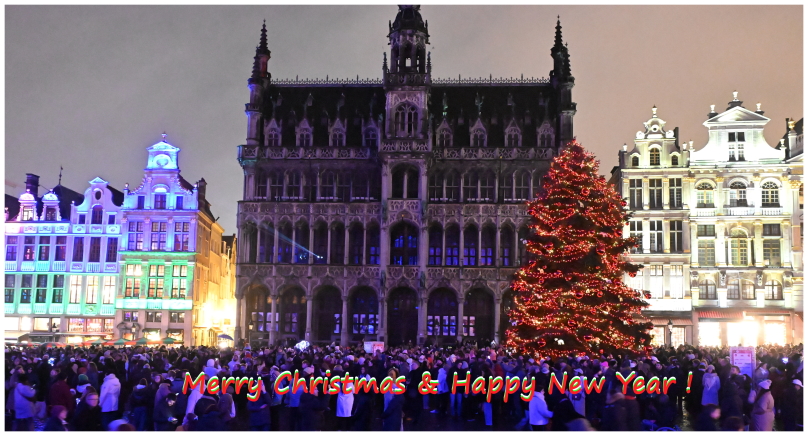The Meetjesland in the north of East-Flanders, Belgium

Lovendegem
We find the name of this town written as "Lovendenghiem" for the first time in 1140. It was then a settlement of the Franks, a Germanic tribe that had invaded the Roman Empire in the 5th Century and settled in what is now Belgium and the northern part of France. But there are traces of human habitation going back to the Iron Age.
Lovendegem is a sandy region between 6 and 8 meters above sea level. The confluence of two small rivers, the Durme and the Poeke on the borders of Lovendegem gave the town its strategic position. Especially the Durme, earlier called the Hoogkale, was important because it was navigable. Between 1613 and 1623 it was deepened and straightened to become the Bruges Canal "Brugse Vaart". There was yet another man made waterway, the Lieve. Dug around 1251 it connected Damme with Ghent. It is to some extent the eastern border of Lovendegem.
 |
The Chateau of the Dons de Lovendeghem family. The imposing building as we see it today dates from about 1880. |
In 1803 Pierre Joseph Triest became the parish priest of Lovendegem. He was born in Brussels on 31/8/1760, the ninth child of a well-to-do family. When the French Revolution broke out he refused to take the oath and went underground. Here now he saw more of the results of that catastrophe called the French Revolution: the extreme poverty, the lack of education and all the evils that come with them. He immediately tried to organize a helping hand and the result was the creation of a new congregation.
 The Order of the Sisters of
Charity of Jesus and Mary was officially founded by the bishop of Ghent, Mgr.
Fallot de Beaumont on 4 November 1803. The real founder was canon Jozef
Triest. The Sisters were installed in a house in the Appensvoorde Road
in Lovendegem. This congregation became one of the largest in Belgium
with convents all over Belgium and in places as far away as England, the Congo
and India.
Here
is the official website (in English) of the Sisters of Charity. The
beatification process of Canon Triest was officially opened by his Excellency the
Right Reverend Arthur Luysterman, bishop of Ghent on 26 August 2001.
The Order of the Sisters of
Charity of Jesus and Mary was officially founded by the bishop of Ghent, Mgr.
Fallot de Beaumont on 4 November 1803. The real founder was canon Jozef
Triest. The Sisters were installed in a house in the Appensvoorde Road
in Lovendegem. This congregation became one of the largest in Belgium
with convents all over Belgium and in places as far away as England, the Congo
and India.
Here
is the official website (in English) of the Sisters of Charity. The
beatification process of Canon Triest was officially opened by his Excellency the
Right Reverend Arthur Luysterman, bishop of Ghent on 26 August 2001.
Lovendegem is in the southern part of our Meetjesland and touches on the suburbs of Ghent. It remained an agrarian community until well into the 1950s. Now it has become much more a residential area.
Maurice De Waele was one of the most famous sons of Lovendegem. He was born here on 27 December 1896. He was a professional road bicycle racer. Let’s take as an example the Tour de France: Maurice was 2nd in the Tour in 1927, 3rd in 1928, 1st in 1929 and 5th in 1931. Also in 1931 he won the Tour of Belgium. He died on 14 February 1952 in Maldegem.
In 1977 many towns in Belgium were merged. One of these mergers brought together Lovendegem and Vinderhoute.
Our source for most of the above: "Streekgids Meetjesland", pp. 97-100.

More pictures
Our Meetjesland
— Table of Contents
— Find something in this Meetjesland website

MijnPlatteLand.com
Most recent update : 22-04-2021
Copyright Notice (c) 2025

